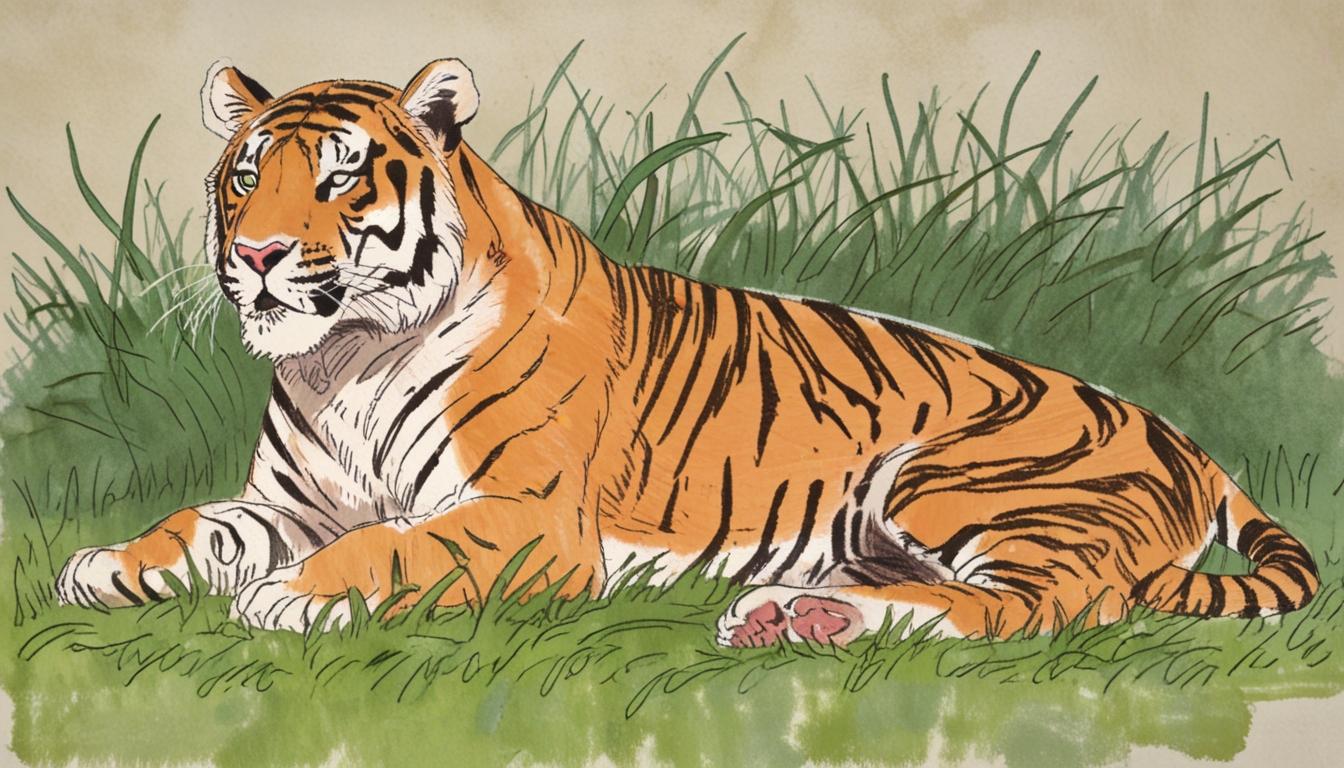Animal rights campaigners are raising serious concerns regarding a prominently displayed stuffed Bengal tiger at the Bristol Museum, which was shot during a notorious big-game hunting expedition in 1911 by King George V, the great-grandfather of King Charles. The call for action follows a long-standing opposition to the glorification of trophy hunting, which many view as a relic of a bygone era that continues to have detrimental effects on wildlife populations.
The tiger, which measures an imposing eight feet, is part of a museum display that features the majestic feline crouching in grass before a mural depicting King George V in safari attire, complete with an elephant and a shotgun. This display not only reflects the disturbing practices associated with colonial hunting but also serves as a reminder of a time when such activities were seen as a symbol of power and prestige. According to historical records, during that ten-day hunting trip in Nepal, George V boasted about killing 21 tigers, among other animals, and labelled it a 'record' that would be hard to beat.
Elisa Allen, from People for the Ethical Treatment of Animals (PETA), argues that it is imperative to confront this 'shameful past,' stating, "Bury the dead respectfully...just as we are returning human remains and artefacts to their countries of origin." Allen’s comments underscore a growing sentiment that the context surrounding such trophies should be starkly acknowledged and that the lives lost were not mere statistics in a hunting ledger.
Dr. Mark Jones of the Born Free Foundation echoed these sentiments, asserting that trophy hunting has had a devastating impact on wildlife populations globally. The tiger, now a central figure in this debate, has become emblematic of colonial attitudes towards wildlife that many believe should be challenged and reconsidered in modern society. Campaigners have demanded either the removal of the tiger from display to be buried respectfully in its homeland or at the very least, that the plaque accompanying the exhibit should accurately detail the 'horrific dispatch' of the animal.
Historical context adds weight to the current discussion. King George V's hunting expedition has been recognised as one of the largest royal hunts in history, leading to the deaths of 39 tigers, among other species. Photographs from the expedition depict a hunting party that was not just shooting for sport but engaging in a brutal practice facilitated by their position of power. This hunt was organised by the then Prime Minister of Nepal, Chandra Shumsher Jang Bahadur Rana, who arranged for elephants to corral the game for the hunters, illustrating the stark disparity between the royal hunters and the animals they pursued.
As public consciousness shifts towards animal welfare and conservation, the memories of such episodes are increasingly viewed not with nostalgia but with critical reflection. Many activists and conservationists urge museums to rethink their displays to better represent the brutal realities of past practices rather than romanticise them.
In light of these allegations and pressures from activists, the Bristol Museum faces a critical decision regarding the future of the Bengal tiger exhibit. The matter seems to encapsulate a larger conversation about how society remembers its history and addresses the consequences of past actions on present-day wildlife conservation efforts. As this debate continues, it stands as a stark reminder of the need for ethical considerations in how humans interact with and depict the natural world.
Reference Map
Source: Noah Wire Services
